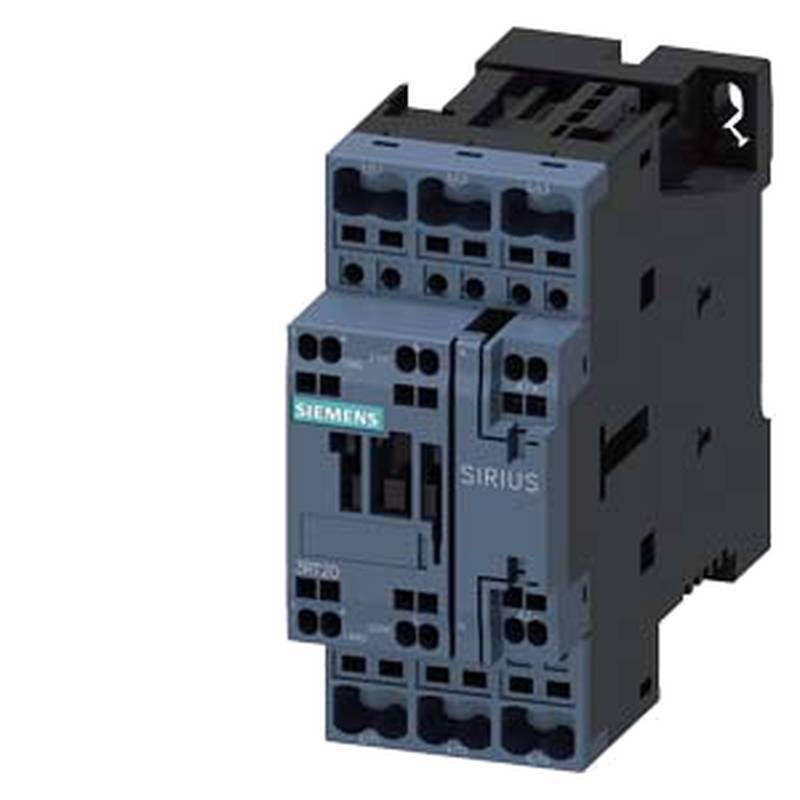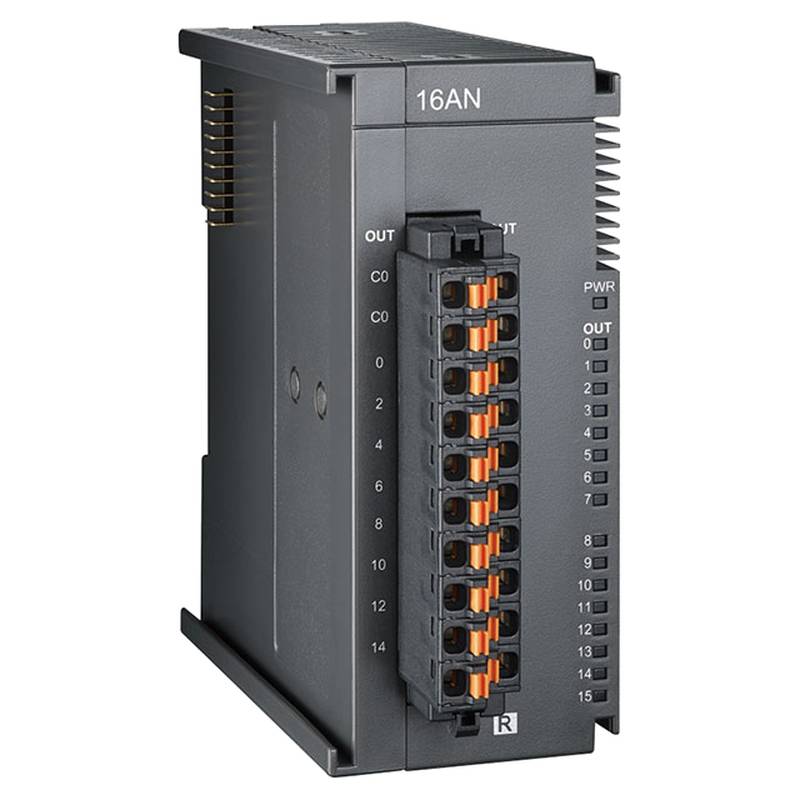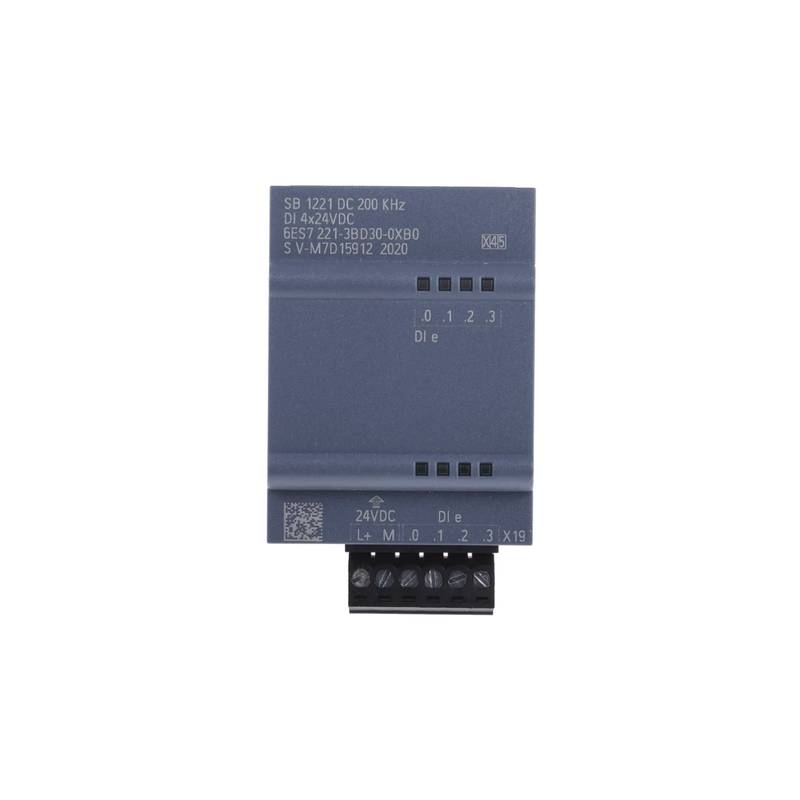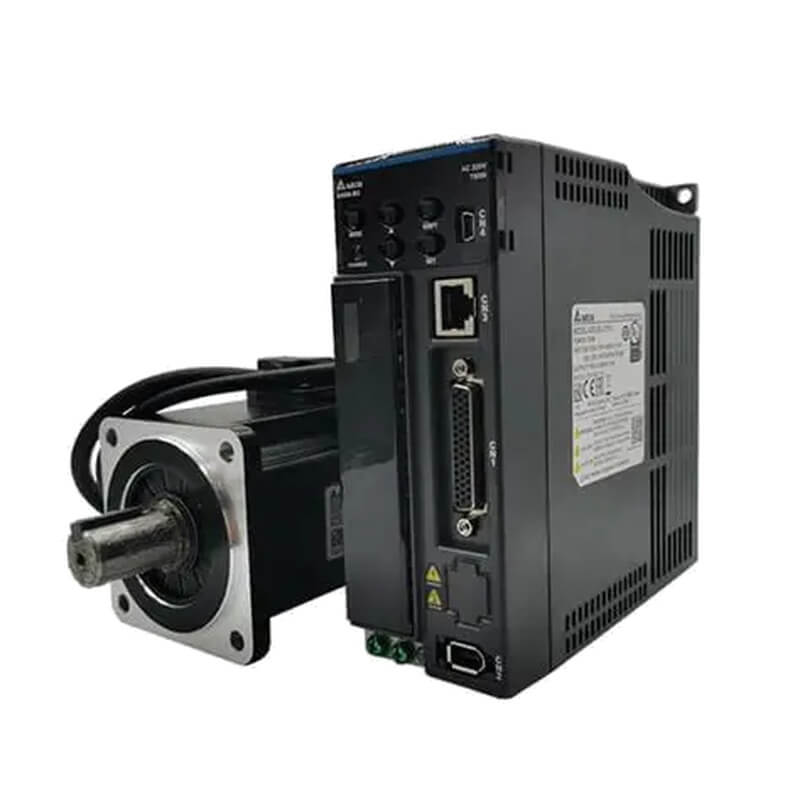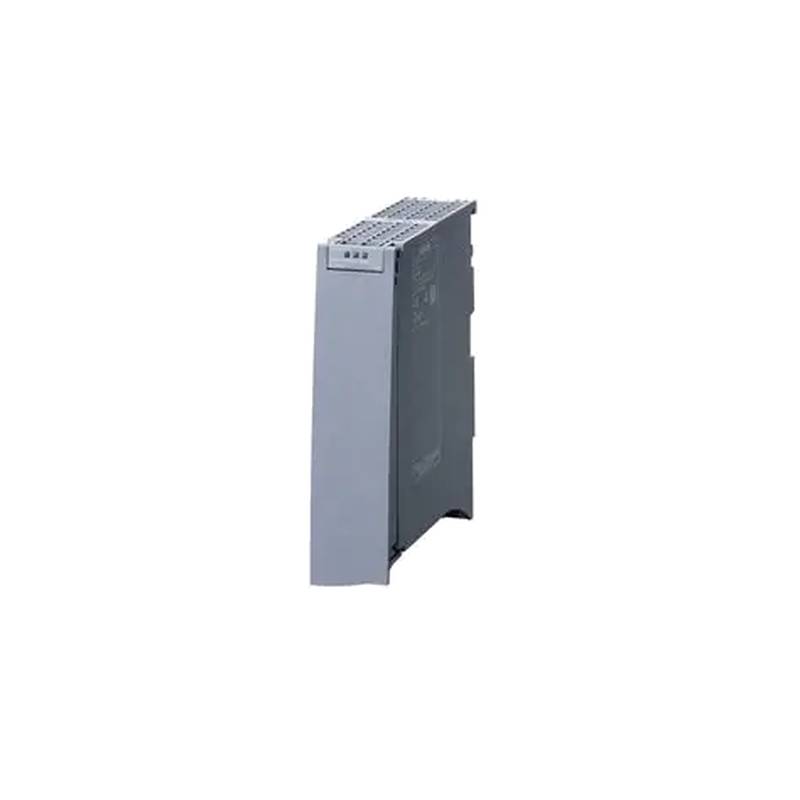
The Siemens 3RT2027-2AL20 Enhanced Industrial Control Contactor Unit stands as a robust and reliable solution for demanding industrial applications, offering a 230VAC coil voltage, a substantial 32A current rating, and three normally open (NO) poles. This contactor unit is engineered for superior performance and longevity, featuring compact dimensions and straightforward integration into existing control systems. Its advanced design ensures high switching capacity and exceptional durability, making it a preferred choice for motor control, power distribution, and various switching tasks within manufacturing, automation, and process industries. Key technical parameters include its AC-3 utilization category, a rated impulse withstand voltage of 6 kV, and a wide operating temperature range, underscoring its suitability for challenging environments.
Product Specifications
| Feature | Specification |
| :----------------------- | :------------------------------- |
| Manufacturer | Siemens |
| Product Series | 3RT2 |
| Model Number | 3RT2027-2AL20 |
| Coil Voltage | 230 VAC |
| Rated Operational Current | 32 A |
| Number of Poles | 3 |
| Pole Type | Normally Open (NO) |
| AC-3 Utilization Category| 32 A (at 400 V) |
| Rated Impulse Withstand Voltage | 6 kV |
| Operating Temperature | -25 to +60 °C |
| Dimensions (H x W x D) | 86 mm x 45 mm x 92 mm |
| Mounting Type | Rail-mounted (35 mm DIN rail) |
| Protection Rating | IP20 |
Core Features & Market Positioning
The Siemens 3RT2027-2AL20 distinguishes itself through its superior arc-quenching capabilities and extended electrical lifespan, significantly outperforming many standard contactors. Its robust construction ensures reliable operation even under frequent switching cycles and challenging ambient conditions. This unit is positioned as a premium component for applications demanding high reliability and minimal downtime, aligning with Siemens' reputation for quality and innovation in industrial automation. The integrated auxiliary contacts (if applicable to specific variants or add-ons) and modular design enhance its versatility and ease of maintenance, setting it apart in a competitive market focused on operational efficiency and long-term cost-effectiveness.
Key Application Scenarios
This Siemens 3RT2027-2AL20 contactor unit is ideally suited for a broad spectrum of industrial applications. Its primary use is in the direct on-line (DOL) starting of three-phase motors up to its rated power capacity, ensuring reliable motor control in manufacturing plants and assembly lines. It is also extensively employed in power distribution panels for switching heavy loads, as well as in HVAC systems for controlling fans and pumps. Furthermore, its robust design makes it suitable for use in material handling equipment, conveyor systems, and process control loops where consistent and safe electrical switching is paramount.
Practical System Integration Guidance
Integrating the Siemens 3RT2027-2AL20 into control systems is streamlined due to its standard DIN rail mounting and clear terminal designations. For installation, ensure the power supply to the control circuit is de-energized. Mount the contactor securely onto a 35 mm DIN rail, ensuring proper alignment. Connect the main power conductors to the primary terminals (L1, L2, L3) and the motor or load to the secondary terminals (T1, T2, T3) according to the wiring diagram. The 230VAC coil can be energized via dedicated control wiring from a PLC or a manual control station, observing correct polarity if applicable to the coil circuit.
When wiring the 230VAC coil, it's critical to connect the live and neutral wires to the appropriate coil terminals (typically A1 and A2, though always verify with the product manual). Ensure all connections are torqued to the manufacturer's specifications to prevent loose connections, which can lead to overheating or intermittent operation. For applications involving control signals from PLCs, ensure the PLC output voltage and current ratings are compatible with the contactor's coil requirements. Use appropriate surge suppression devices if the control circuit is prone to electrical noise or transient voltages.
Commissioning involves a step-by-step energization and testing procedure. First, verify all physical wiring and insulation resistance. Then, energize the control circuit and listen for the characteristic "click" of the contactor engaging. Test the operation by applying a signal to energize the coil and then removing it to de-energize, observing the switching action. If auxiliary contacts are utilized for feedback to a control system, verify their status change correctly during each switching cycle. Perform load testing at reduced capacity initially, gradually increasing to operational levels while monitoring for any anomalies.
Operation and Risk Mitigation
Safe operation of the Siemens 3RT2027-2AL20 is paramount. Always ensure that the power supply to both the main circuit and the control coil is de-energized and locked out before performing any maintenance, wiring, or inspection. The IP20 protection rating means the unit is protected against solid objects greater than 12.5 mm but offers no protection against water; therefore, install it in a dry and clean environment. Regular visual inspections for signs of wear, overheating, or damage are recommended to prevent potential failures.
Troubleshooting common issues with this contactor unit typically involves checking the coil voltage and connections. If the contactor fails to energize, verify the 230VAC supply to the coil terminals (A1/A2) using a multimeter. If the coil is energized but the main contacts do not close, there may be an internal fault or a mechanical obstruction. Conversely, if the contactor remains closed when the coil is de-energized, this indicates a welding of the contacts or a failure in the release mechanism, requiring replacement.
To mitigate risks associated with contactor failure, implement a robust preventative maintenance schedule. This includes periodic testing of contact resistance and coil continuity, especially for units in high-cycle applications. Ensure the ambient temperature stays within the specified operating range (-25 to +60 °C) to prevent overheating or performance degradation. Employ appropriate upstream overcurrent protection devices (fuses or circuit breakers) sized correctly for the contactor and the load to prevent damage in case of a short circuit or overload.
Scalability & Long-Term Value
The Siemens 3RT2027-2AL20 offers excellent scalability and long-term value within industrial automation ecosystems. Its compatibility with other Siemens industrial control products, such as overload relays and soft starters from the Sirius range, allows for the creation of sophisticated, modular motor control solutions. This inherent modularity facilitates future system expansions or upgrades without requiring a complete overhaul of existing infrastructure.
Integration with modern industrial control platforms, including PLCs and SCADA systems, is straightforward, enabling seamless data acquisition and remote monitoring capabilities. For facilities moving towards Industry 4.0 initiatives, this contactor can be part of a networked control architecture, contributing to enhanced operational visibility and predictive maintenance strategies when paired with appropriate communication modules.
The long-term value is further realized through its durability and the availability of spare parts, minimizing total cost of ownership. Its robust design ensures a long service life, reducing the frequency of replacements and associated downtime. By investing in high-quality components like the 3RT2027-2AL20, businesses secure reliable performance and operational continuity, which are critical for sustained productivity and competitiveness in the industrial sector.
FAQs
Q1: What is the primary function of the Siemens 3RT2027-2AL20 contactor?
A1: It acts as an electrically operated switch. It is used to switch a motor or other electrical load on or off remotely.
A2: This contactor specifically controls three-phase loads with its three normally open poles. Its 32A rating is suitable for moderately sized industrial motors.
A3: Its main application is in motor control circuits, power distribution, and general switching tasks within industrial automation systems.
Q2: Can the 3RT2027-2AL20 be used for DC loads?
A1: No, this specific model is designed and rated exclusively for AC applications.
A2: Its internal arc suppression and contact design are optimized for AC circuits, not DC. Using it for DC loads can lead to premature failure.
A3: For DC switching applications, a different Siemens contactor series designed for DC voltage and current would be required.
Q3: What is the significance of the 230VAC coil voltage?
A1: This is the voltage required to energize the electromagnet within the contactor. This energizes the coil and closes the main contacts.
A2: A 230VAC coil is common in many industrial control panels, allowing integration with standard control power supplies or relays.
A3: It dictates the control signal voltage needed to operate the contactor, ensuring compatibility with the control system.
Q4: How do I wire the Siemens 3RT2027-2AL20 for motor control?
A1: Connect the main power supply lines (L1, L2, L3) to the top terminals and the motor leads to the bottom terminals (T1, T2, T3).
A2: The 230VAC coil terminals (A1 and A2) are connected to the control circuit that will provide the operating voltage.
A3: Always follow the wiring diagram provided in the product manual for correct and safe installation to prevent damage.
Q5: What is the AC-3 utilization category for this contactor?
A1: The AC-3 rating signifies its suitability for starting squirrel-cage motors. It can handle the higher starting currents.
A2: It indicates the contactor can switch motor loads during starting and is also capable of breaking running motor current.
A3: The 32A rating within the AC-3 category specifies the maximum continuous current for motor starting and stopping operations.
Q6: Can I add auxiliary contacts to the 3RT2027-2AL20?
A1: Yes, this contactor series typically supports add-on auxiliary contact blocks. These can be mounted on the front or side.
A2: These auxiliary contacts provide additional signaling capabilities, such as feedback on the contactor's state for control systems.
A3: Ensure you use Siemens-approved auxiliary contact blocks that are compatible with the 3RT20 contactor series for reliable operation.
Q7: What ambient temperature range is acceptable for this contactor?
A1: The 3RT2027-2AL20 is designed to operate reliably within a temperature range of -25°C to +60°C.
A2: Operating outside this range can affect performance, lifespan, and potentially cause damage to the contactor.
A3: Ensure adequate ventilation in the enclosure to maintain the temperature within these limits, especially in hot environments.
Q8: How does this contactor protect against overloads?
A1: This contactor itself does not provide overload protection; it's a switching device.
A2: Overload protection must be provided by a separate device, such as a Siemens 3RU overload relay, connected in series with the contactor.
A3: The overload relay monitors motor current and trips the control circuit, de-energizing the contactor to protect the motor.
Q9: What does the "3NO" in the product description mean?
A1: "3NO" signifies that the contactor has three poles, and each pole is a Normally Open (NO) contact.
A2: Normally Open contacts are open circuits when the coil is de-energized and close to complete a circuit when the coil is energized.
A3: This configuration is typical for directly switching the three phases of a motor on and off.
Q10: Is this Siemens contactor compatible with PLCs?
A1: Yes, the 3RT2027-2AL20 is fully compatible with Programmable Logic Controllers (PLCs).
A2: The 230VAC coil can be directly controlled by a PLC output module, provided the module can supply the necessary voltage and current.
A3: Ensure the PLC output is appropriately rated and consider using a PLC output module with integrated surge suppression for added protection.














